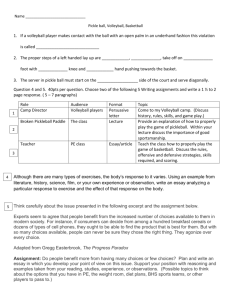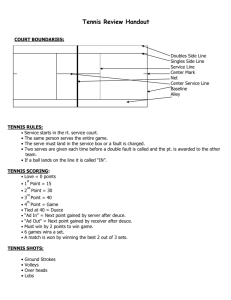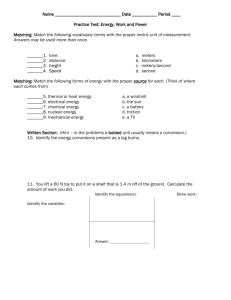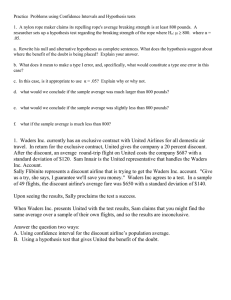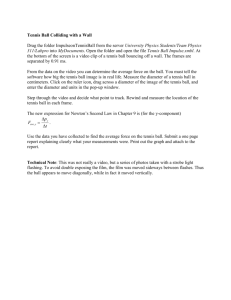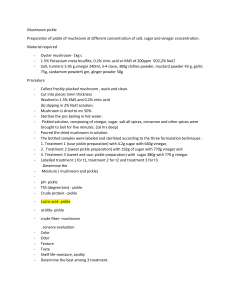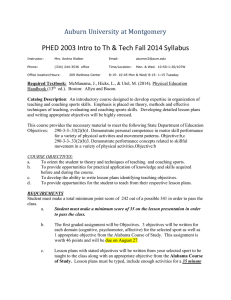Paddle Ball
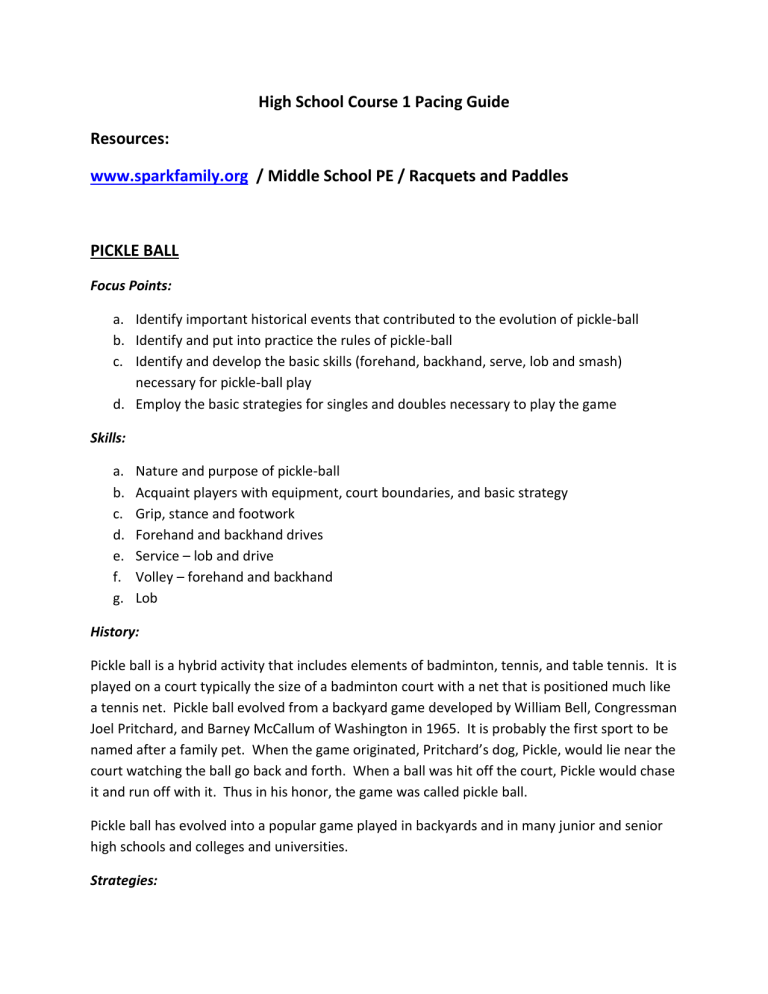
High School Course 1 Pacing Guide
Resources: www.sparkfamily.org
/ Middle School PE / Racquets and Paddles
PICKLE BALL
Focus Points: a.
Identify important historical events that contributed to the evolution of pickle-ball b.
Identify and put into practice the rules of pickle-ball c.
Identify and develop the basic skills (forehand, backhand, serve, lob and smash) necessary for pickle-ball play d.
Employ the basic strategies for singles and doubles necessary to play the game
Skills: a.
Nature and purpose of pickle-ball b.
Acquaint players with equipment, court boundaries, and basic strategy c.
Grip, stance and footwork d.
Forehand and backhand drives e.
Service – lob and drive f.
Volley – forehand and backhand g.
Lob
History:
Pickle ball is a hybrid activity that includes elements of badminton, tennis, and table tennis. It is played on a court typically the size of a badminton court with a net that is positioned much like a tennis net. Pickle ball evolved from a backyard game developed by William Bell, Congressman
Joel Pritchard, and Barney McCallum of Washington in 1965. It is probably the first sport to be named after a family pet. When the game originated, Pritchard’s dog, Pickle, would lie near the court watching the ball go back and forth. When a ball was hit off the court, Pickle would chase it and run off with it. Thus in his honor, the game was called pickle ball.
Pickle ball has evolved into a popular game played in backyards and in many junior and senior high schools and colleges and universities.
Strategies:
a.
Analyze the opponent’s strengths and weaknesses. b.
Aim shots at opponent’s weaknesses while employing your strengths. c.
Vary the strategy to include fast balls alternated with lobs in sufficient frequency to get the opponent off balance. d.
Work for desirable position on court. e.
Place shots skillfully (drop shot, lobs, drives, service placement, overhead smash and volleys). f.
Utilize your doubles partner’s strengths.
Assessment: a.
Performance rubric b.
Peer Checklist c.
Written quiz
Vocabulary:
Review the components of skill-related fitness: a.
Agility – ability to change your body position quickly and to control your body’s movements. b.
Balance – An even distribution of weight enabling someone or something to remain upright and steady. c.
Coordination – ability to use your senses together with your body parts. d.
Explosive power – A quick muscular effort resulting in speed and/or power for a short period of time. Examples include tee shot, batting, tennis serve, basketball rebound, football tackle, etc. e.
Power – ability to use strength quickly. Areas most likely to improve with repeated effort. f.
Reaction time – amount of time it takes you to move once you realize the need to act. g.
Speed – ability to perform a movement or cover a distance in a short period of time.
Review the principles of biomechanics: a.
Force – A push or a pull applied to an object or person, measured in pounds or newtons. b.
Inertia – The tendency of a body at rest to remain at rest or of a body in straight line motion to c.
stay in motion in a straight line unless acted on by an outside force.
Leverage – 1. a. The action of a lever. b. The mechanical advantage of a lever. 2. Positional d.
advantage; power to act effectively
Opposition - The use of body parts on opposite sides of body to increase force and power. e.
Rotary Motion – The act of rotating as if on an axis; "the rotation of the dancer kept time with the music.”
